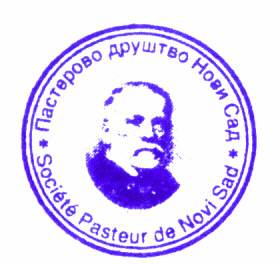md-medicaldata
Main menu:
- Naslovna/Home
- Arhiva/Archive
- Godina 2024, Broj 1
- Godina 2023, Broj 3
- Godina 2023, Broj 1-2
- Godina 2022, Broj 3
- Godina 2022, Broj 1-2
- Godina 2021, Broj 3-4
- Godina 2021, Broj 2
- Godina 2021, Broj 1
- Godina 2020, Broj 4
- Godina 2020, Broj 3
- Godina 2020, Broj 2
- Godina 2020, Broj 1
- Godina 2019, Broj 3
- Godina 2019, Broj 2
- Godina 2019, Broj 1
- Godina 2018, Broj 4
- Godina 2018, Broj 3
- Godina 2018, Broj 2
- Godina 2018, Broj 1
- Godina 2017, Broj 4
- Godina 2017, Broj 3
- Godina 2017, Broj 2
- Godina 2017, Broj 1
- Godina 2016, Broj 4
- Godina 2016, Broj 3
- Godina 2016, Broj 2
- Godina 2016, Broj 1
- Godina 2015, Broj 4
- Godina 2015, Broj 3
- Godina 2015, Broj 2
- Godina 2015, Broj 1
- Godina 2014, Broj 4
- Godina 2014, Broj 3
- Godina 2014, Broj 2
- Godina 2014, Broj 1
- Godina 2013, Broj 4
- Godina 2013, Broj 3
- Godina 2013, Broj 2
- Godina 2013, Broj 1
- Godina 2012, Broj 4
- Godina 2012, Broj 3
- Godina 2012, Broj 2
- Godina 2012, Broj 1
- Godina 2011, Broj 4
- Godina 2011, Broj 3
- Godina 2011, Broj 2
- Godina 2011, Broj 1
- Godina 2010, Broj 4
- Godina 2010, Broj 3
- Godina 2010, Broj 2
- Godina 2010, Broj 1
- Godina 2009, Broj 4
- Godina 2009, Broj 3
- Godina 2009, Broj 2
- Godina 2009, Broj 1
- Supplement
- Galerija/Gallery
- Dešavanja/Events
- Uputstva/Instructions
- Redakcija/Redaction
- Izdavač/Publisher
- Pretplata /Subscriptions
- Saradnja/Cooperation
- Vesti/News
- Kontakt/Contact
 Pasterovo društvo
Pasterovo društvo
- Disclosure of Potential Conflicts of Interest
- WorldMedical Association Declaration of Helsinki Ethical Principles for Medical Research Involving Human Subjects
- Committee on publication Ethics
CIP - Каталогизација у публикацији
Народна библиотека Србије, Београд
61
MD : Medical Data : medicinska revija = medical review / glavni i odgovorni urednik Dušan Lalošević. - Vol. 1, no. 1 (2009)- . - Zemun : Udruženje za kulturu povezivanja Most Art Jugoslavija ; Novi Sad : Pasterovo društvo, 2009- (Beograd : Scripta Internacional). - 30 cm
Dostupno i na: http://www.md-medicaldata.com. - Tri puta godišnje.
ISSN 1821-1585 = MD. Medical Data
COBISS.SR-ID 158558988
GLIOZA PINEALNE ŽLEZDE KOD ČOVEKA TOKOM STARENJA
GLIOSIS OF PINEAL GLAND IN HUMANS DURING AGING
Authors
Milan Popović1, Valerija Munteanu2, Dejan Miljković1, Aleksandra Rakovac3, Dušan Vapa4, Dušan Lalošević1,5, Ivan Čapo1
1 Katedra za histologiju i embriologiju, Medicinski Fakultet, Univerzitet u Novom Sadu
2 Klinika za radiologiju, Klinički centar Vojvodine, Novi Sad
3 Katedra za fiziologiju, Medicinski fakultet, Univerzitet u Novom Sadu
4 Katedra za sudsku medicinu, Medicinski fakultet, Univerzitet u Novom Sadu
5 Pasterov Zavod, Novi Sad
• Rad je primljen 14.12.2016 ./ Prihvaćen 22.12.2016.
Correspondence to:
Dr Milan Popović
Katedra za histologiju i embriologiju, Medicinski fakultet, Univerzitet u Novom Sadu
Hajduk Veljkova 3, 21000 Novi Sad
e-mail: milan.popovic@mf.uns.ac.rs
Abstract
Introduction: The pineal gland represents a neuroendocrine organ. Gland parenchyma is composed of higher percentage of pinealocytes and about 5% of glial cells. Earlier studies showed that there is reduced cellularity of gland, gliosis and higher percentage of calcification during aging in addition to increased accumulation of pigments in pinealocytes.
Aim: Aim of this study was to monitor the expression of marker S-100β in tissue of human pineal gland, as well as identification of differences in expression of the same marker depending on the sex and according to age.
Material and Methods: The study included 26 samples which were divided into two groups: group I (n=13) included the pineal glands of people younger than 50 years and group II (n=13) pineal glands of people older than 50 years. After histological processing of samples, sections were stained with hematoxylin-eosin stain and immunohistochemically with anti - S-100β antibody. The number of glial cells of the pineal gland was determined, also with the total number of cells per unit area. In data processing we used Mann-Whitney test and statistically significant value was considered p<0,05.
Results: There was an increased total number of cells per unit area in people younger than 50 years. Percentage of glial cells was increased in people older than 50 years.
Conclusion: The glial cells of the human pineal gland showed S-100β positive staining. During aging the percentage of human glial cells was increased, while pineal parenchyma in younger people was more cellular.
Key words
pineal gland, glial cells, aging, S-100β
References
- Scharenberg K, Liss L. The histologic structure of the human pineal body. Progress in brain research. 1964;10:193-217.
- Erlich S, Apuzzo M. The pineal gland: anatomy, physiology, and clinical significance. Journal of neurosurgery. 1985;63(3):321-41.
- Ross MH, Pawlina W. Histology: a text and atlas with correlated cell and molecular biology. 5th ed. Baltimore: Lippincott Williams & Wilkins; 2006. p. 698-700.
- Junqueira LC, Carneiro J. Basic histology: text & atlas. 10th ed. USA:McGraw-Hill Companies; 2003. p. 430.).
- Møller M, Baeres F M. M. The anatomy and innervation of the mammalian pineal gland. Cell Tissue Res (2002) 309:139–150.
- Arendt J. Melatonin. Clinical endocrinology, 1988, 29,2: 205-229.
- Reiter RJ. The ageing pineal gland and its physiological consequences. Bioessays, 1992;14: 169–175;
- Regodón S, Franco A, Masot J, Redondo E. Structure of the ovine pineal gland during prenatal development. J Pineal Res. 1998; 25:229–239.
- Calvo J, Boya J. Postnatal development of cell types in the rat pineal gland. Journal of Anatomy. 1983;137(Pt 1):185-195.
- Stein BM, Fetell MR, Duffy PE. Immunocytochemistry of pineal astrocytes: species differences and functional implications. JNEN 1985, 44 (5) 486-495.
- Shimada H. Ultrastructural study of the human pineal gland in aged patients including a centenarian. Actapathologica japonica. 1990;40(1):31.
- Galliani I, Frank F, Gobbi P, Giangaspero F, Falcieri E. Histochemical and ultrastructural study of human pineal gland in the course of aging. J Submicrosc Cytol Pathol. 1989;21(3):571-8.
- Koshy S, Vettivel S. Melanin pigment in human pineal gland. J Anat Soc India. 2001;50:122-6.
- Tapp E, Huxley M. The histological appearance of the human pineal gland from puberty to old age. J Patho. l1972;108:137-44.
- Hasegawa A, Ohtsubo K, Mori W. Pineal gland in old age; quantitative and qualitative morphological study of 168 human autopsy cases. Brain Res 1987;409:343-9.
- Møller M, Ingild A, BockE. Immunohistochemical demonstration of S-100 protein and GFA protein in interstitial cells of rat pineal gland. Brain Res1978;140:1-13.
- Huang SK, Nobiling R, Schachner M, Taugner PDR. Interstitial and parenchymal cells in the pineal gland of the golden hamster. Cell and tissue research, 1984;235(2):327-337.
- Esteban G, Muñoz MI, Carbajo S, Carvajal JC, Alvarez-Morujo AJ, Barragán, LM. Pineal gliosis and gland ageing. The possible role of the glia in the transfer of melatonin from pinealocytes to the blood and cerebrospinal fluid. Eur J Anat. 2008; 12(1):97-114.
- Moore BW. A soluble protein characteristic of the nervous system. Bioehem. biophys. Res. Commu H.. 1965;19:739-744.
- Hyden H, McEwen BS. A glial protein specific for the nervous system. Proc. nat. Aead. Sei.(Wash.). 1966;55:354-8.
- Donato R. Intracellular and extracellular roles of S100 proteins. Microsc Res Tech. 2003; 60:540-551.
- Sedaghat F, Notopoulos A. S100 protein family and its application in clinical practice. Hippokratia. 2008;12(4):198-204.
- Wildi R, Frauchiger E. Modifications histologiques de l'epiphyse humaine pendant I'enfance, l'age adulte et Ie vieillissement. Prog. Brain Res. 1965;10:218-223.
- Trentini GP, De Gaetani EF, Pierini G, Criscuolo M, Vidyasagar RJ, Fabbri F. Some aspects of human pineal pathology. In: Reiter R.J., Karasek M. (Eds.), Advances in pineal research: 1. John Libbey, London-Paris, 1986, pp. 219-229.
- Khavinson, VK, Linkova NS. Morphofunctional and molecular bases of pineal gland aging. Human Physiology. 2001;38(1):101-107.
- Tapp E. The Human Pineal Gland in Malignancy. J. Neural Transmission. 1980;48:119—129.
- Horanyi B. Das corpus pineale im senium. Wnr. Zeitschr. Nervenheilk. 1960;16:129-139.
- Boya J. ,Calvo J. Structure and ultrastructure of the aging rat pineal gland. J. Pineal Res. 1984;1:83-89,
- Singh R, Ghosh S, Joshi A, Haldar C. Human pineal gland: Histomorphological study in different age groups and different causes of death. Journal of the Anatomical Society of India. 2014;30:1-5
- Papasozomenos, SC. Glial fibrillary acidic (GFA) protein-containing cells in the human pineal gland. Journal of Neuropathology & Experimental Neurology.1983;42(4):391-408
- Bastianelli E, Pochet R. Calbindin‐D28k, calretinin, and S-100 immunoreactivities in rat pineal gland during postnatal development. Journal of pineal research. 1995;18(3):127-134.
- Borregón A, Boya J, Calvo JL, López-Muñoz F. Immunohistochemical study of the pineal glial cells in the postnatal development of the rat pineal gland. Journal of pineal research. 1993;14(2):78-83.
- Suzuki T, Kachi T. Immunohistochemical studies on supporting cells in the adrenal medulla and pineal gland of adult rat, especially on S-100 protein, glial fibrillary acidic protein and vimentin. Kaibogaku zasshi. Journal of anatomy. 1995;70(2):130-139.
- Ebada, S. Morphological and Immunohistochemical Studies on the Pineal Gland of the Donkey (Equus asinus). J. Vet. Anat. 2012;5(1):47-74.
- Yamane Y, Mena H, Nakazato Y. Immunohistochemical characterization of pineal parenchymal tumors using novel monoclonal antibodies to the pineal body. Neuropathology. 2002;22(2):66-76.
UDK: 615.015-053.2
613.25-053.2
COBISS.SR-ID 226160396
 Medicinski fakultet
Medicinski fakultet